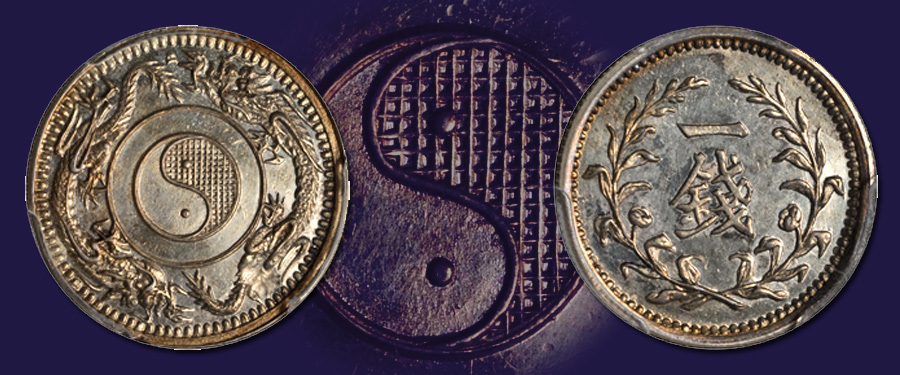
Our Stack’s Bowers and Ponterio August Hong Kong Auction boasts a number of exciting and scarce numismatic treasures. Today we feature a Kwan Ping Trade Coinage series pattern that has attracted considerable interest among Asian numismatic specialists due to its rarity. Patterns for this series were produced based on the Maritime Customs scale in the denominations of 1 Tael, 5 Mace, 2 Mace, 1 Mace and 5 Candareens. This rare and interesting series has long been the topic of speculation by numismatic authors in regard to the mint responsible for its manufacture and intended purpose (see Kann Illustrated Catalog of Chinese Coins pg. 324/5). Previously the Berlin mint, the Royal mint and the Osaka mint have been suggested as possible places of manufacture. It is now certain the dies and patterns originated in England as described by Joe Cribb in his reference Money in the Bank. The original design was proposed by W.F. Wade, Chinese Secretary of the British Legation in Peking. Wade’s propositions for this pattern series were relayed on October 19, 1867, via Captain Kinder to the Governor of Hong Kong. The dies for these patterns are housed in the Royal Mint where they were deposited in 1888 by Kinder’s heirs after his death. Original concept drawings of the proposed coinage design, as well as correspondences from Kinder also survive in London. The dies and patterns were produced in England, with the intention that circulating coinage would be struck by the Hong Kong mint. However the Hong Kong mint closed soon after, ceasing operations in April of 1868. The minting machinery was then sold to the Osaka mint in Japan. It is interesting to note that some numismatists have speculated that this issue may have been intended for use as trade coinage with Korea. In fact, the Bank of Japan has an example of the 1 Mace in its collection listed as Korea. The coins are also listed in The Catalog of Korean Coins and Bank Notes, pg. 171#21.1/21.4. Although use as a Sino-Korean trade coin is plausible, no solid documentation in support of this is known.
The coin displays an intriguing design, with the obverse prominently featuring a yin-yang symbol centrally, with two Asian serpentine dragons chasing each other and forming a circular border. The reverse bears the characters denoting its value of One Mace, surrounded by two branches bearing fruit. These branches are interesting and further supports Kann’s hypothesis that the coinage series is of Chinese essay because the Thea Sinensis (Chinese tea bush) originated in China and is not indigenous to Korea. This example bears semi proof-like fields with generally untoned surfaces. Though the reverse has a few light marks, the obverse is nearly as struck and exceptionally well preserved. This extremely rare and highly interesting coin is sure to continue to draw considerable attention once it reaches the auction block later this month.
Look for this and other Asian and world numismatic rarities in our upcoming August Hong Kong Showcase Auction. Preview the entire auction this August at the Stack’s Bowers and Ponterio office located in Irvine, California and in our Hong Kong office. For details please refer to the Events Calendar link at www.StacksBowers.com. To schedule an appointment, please call 800.458.4646. While our Stack’s Bowers and Ponterio August Hong Kong Showcase Auction is closed for consignments, we are taking consignments of Asian, world and ancient coins for our December Hong Kong Showcase Auction of Chinese and other Asian coins and currency, November Baltimore and New York International auctions. Time is running short, so if you are interested in consigning your coins and paper currency (whether a whole collection or a single rarity) be sure to contact one of our consignment directors.





